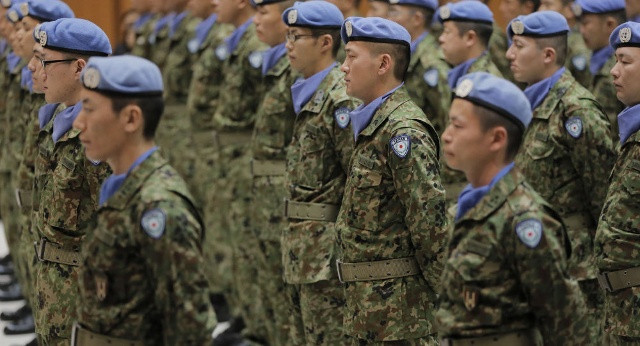Tokyo's military reforms are intended to protect whom?
Japan is changing its military structure, creating military forces and means to be able to use armed forces outside its territory.
 |
| Japan Self-Defense Forces. Photo: AP |
Military spending needs next year will increase by 2.3% compared to 2016. Reuters notes: Japan's military spending plan could be raised to $5.16 billion.
Japanese media explained the need for the upcoming military budget increase due to increased spending to strengthen against the missile threat from North Korea. As well as funding for the construction of submarines. The submarine project will be deployed in 2023 in the South China Sea to counter China. Director of the Center for Japanese Studies Valery Kistanov said about this issue as follows:
"The focus is on the means to deal with the Chinese navy. Strengthen Japan's submarine fleet, develop surveillance equipment, and increase patrol equipment. Conduct special exercises to improve the combat capabilities of the marines and protect remote islands that, according to Tokyo, China could invade.
All this, of course, could affect bilateral relations in general. On the one hand, tensions are likely to arise. China will certainly take this into account in its military strategy in Asia, as well as in bilateral relations. On the other hand, there will be attempts to find some compromise, taking into account common interests.
This will be done at the China-Japan-South Korea trilateral meeting, held in Tokyo next week. The possibility of a meeting between the Chinese and Japanese leaders at the G20 summit in China in early September cannot be ruled out."
Last year, Japan passed a package of laws to expand the scope of its Self-Defense Forces' overseas operations. In addition, Prime Minister Abe's visit to Washington last year contributed to strengthening Japan's military cooperation with the United States. The new budget envisages Japan's first purchase of the US SM-3 Block IIA interceptor missile, which has a maximum altitude of up to 1,000 km.
These missiles are planned to be deployed on warships equipped with the Aegis early warning system. According to the Nihon Keizai newspaper, this fall the missiles will be tested in the vicinity of the Hawaiian Islands, and from 2017 they will begin production.
The US is openly encouraging Japan to build up military forces and military equipment that can eventually be used abroad, as the head of the Academy of Geopolitical Problems, military analyst Konstantin Sivkov said:
"Japan is clearly preparing for operations involving the use of armed forces in remote locations where military conflicts are taking place. To do that, you need money, you need a fleet, you need air power. Naturally, the strengthening of Japan's military power will lead to China increasing its armed forces.
Russia will also be forced to strengthen its naval, aviation, and army fleets in the Far East. Pyongyang will develop its nuclear capabilities, trying to protect itself against possible military action from Japan, the United States, and South Korea.
Washington benefits from Tokyo's militarization policy. The United States is very comfortable using Japan as a vanguard and under their control in Northeast Asia.
According to Sputnik
| RELATED NEWS |
|---|
